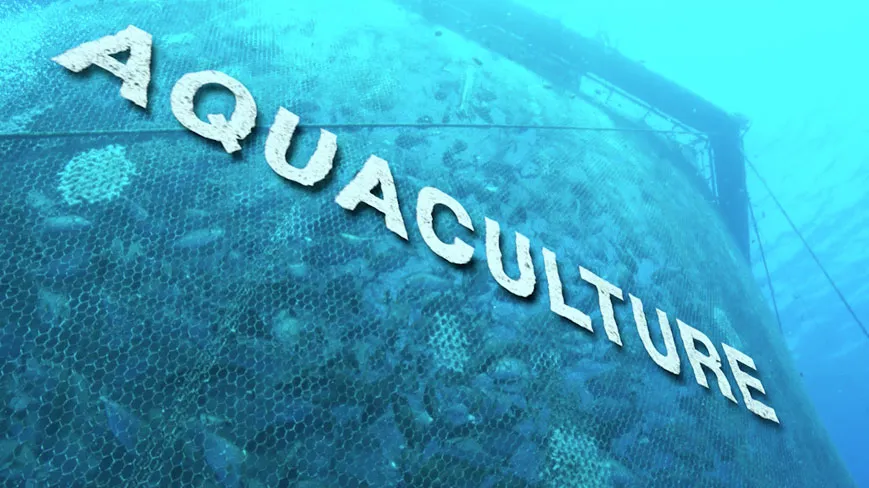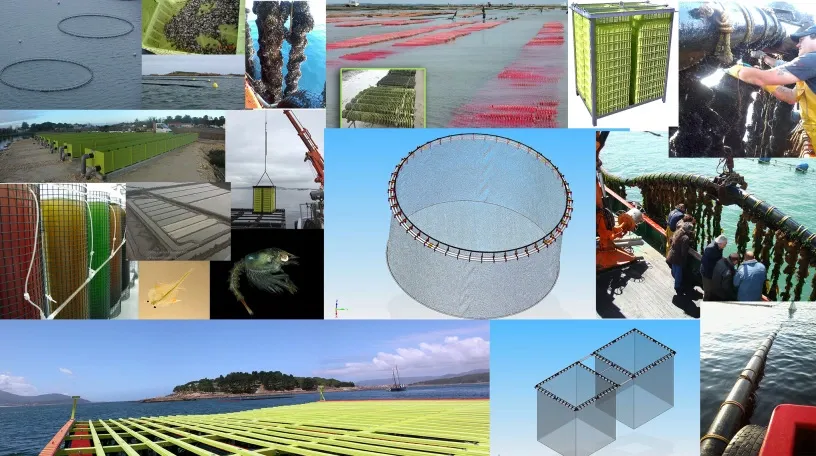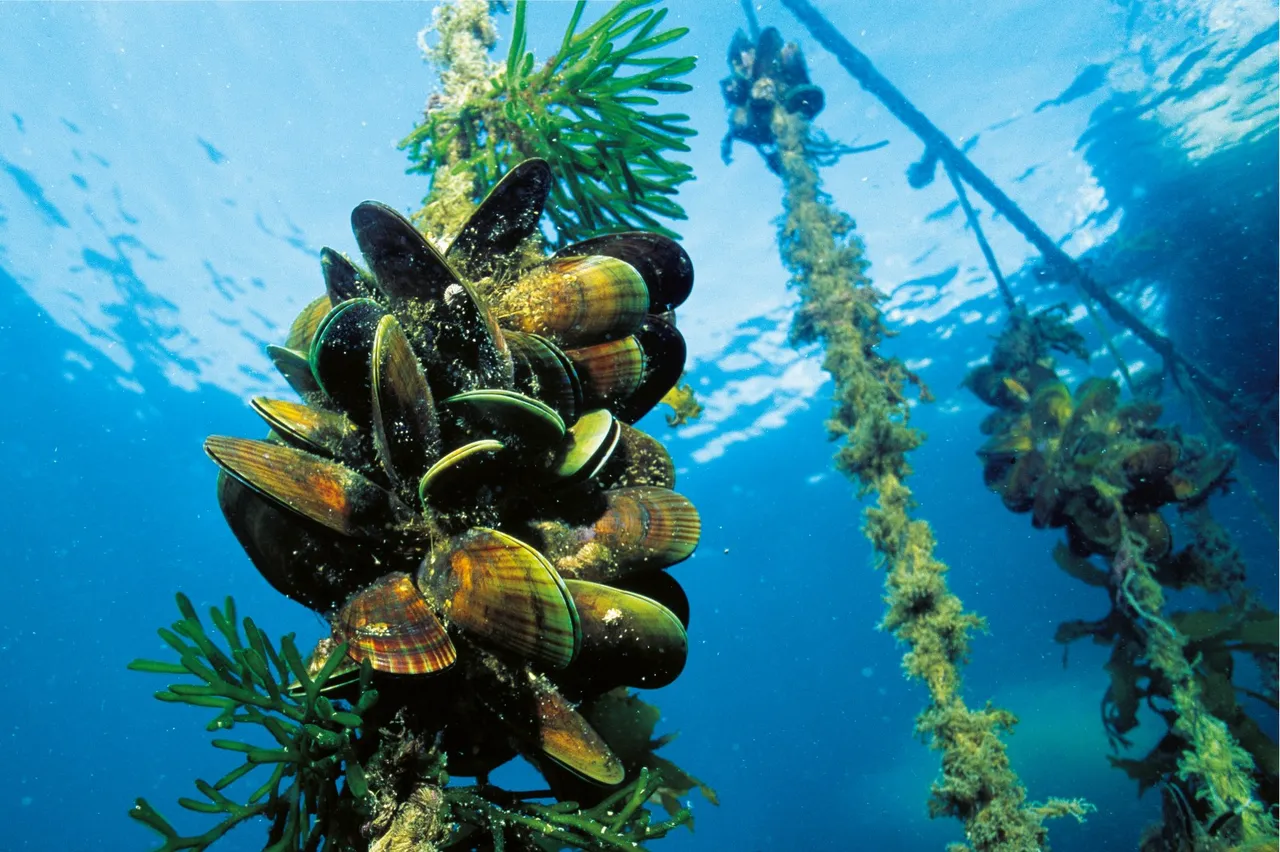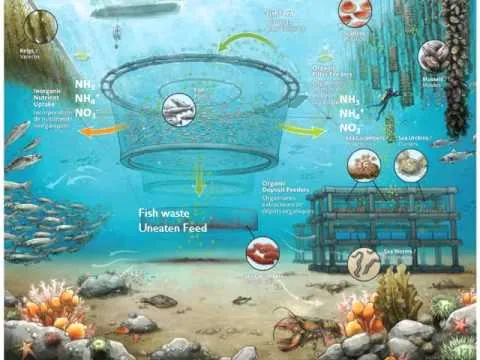
Integrated Multitrophic Aquaculture aims to breed different marine species in the same environment.
It is about creating a trophic chain between them that allows to reduce as much as possible the amount of waste discharged into the ecosystem, improving the water quality and the health of the animals.

Its origin is in sustainable agriculture, sharing with it the basic objective that the breeding activity does not generate environmental imbalances that could put at risk the future viability of the crop. That is to say, that it tries to reduce or eliminate the negative effects derived from the breeding of animals in an area, using for it all the technological and natural resources available. As with some agricultural or livestock activities, aquaculture can have a negative impact on the ecosystem where the activity takes place.
Its operating philosophy is based on the use of the waste generated and the improvement of water quality. The model of multitrophic culture that is usually used as an example would be the rearing of fish, bivalve molluscs and macroalgae. It is known that not consumed remains of feed and detritus of fish can be directly exploited by mussels and other bivalves, since they are non-selective filtering. The algae, on the other hand, absorb nitrogen and provide oxygen, improving the quality of the water.
It has been proven that, in areas where there is a high concentration of crops of the same species, the likelihood of diseases appearing and of causing environmental imbalances due to the contribution of waste, modification of the ecosystem and other environmental degradations linked to the functioning of the marine farms. This makes this type of long-term aquaculture unsustainable, since the degeneration of the cultivation areas could make its future use unviable.
Institutional support for multitrofic aquaculture.
The European Union has set the development of Aquaculture as a priority for several years, as the growth of this activity is lower among member countries compared to the rest of the world. The novelty is that since 2014 we will especially support those projects oriented towards the sustainability of aquaculture, especially those that do so from a multitrophic perspective.

Challenges facing multitrophic aquaculture
Lack of biological knowledge of many species: The variety of marine species that can be cultivated is much higher than that of terrestrial species, so it is a matter of improving knowledge about the biology of different species in order to establish polycultures that have a lower environmental footprint than monocultures
Crop management: Aquaculture is an activity carried out by small producers, with a few exceptions, which are usually very specialized in the cultivation of few species, sometimes only one. This hinders the implementation of a multitrophic system, since they lack the means and adequate training for the exploitation of new species.
Market: Aquaculture is a relatively new activity, many people are still totally unaware of the activity. Introducing new species is usually complicated, most of the aquaculture activity sells its products in the local market, which normally will not be used to the new species that are introduced.
Economic feasibility: Some marine species do not have a stable market or attractive prices that make commercial exploitation possible. For example, there are some types of algae that are collected from the natural environment in underdeveloped countries and then sold dried and pressed at very low prices. Normally the floating structures for the cultivation of marine species have a high cost given their high level of technology and laboriousness of their installation, not all species have a market price that justifies such investment in crop structures.
No suppliers and environmental legislation: Currently there are very few companies dedicated to the sale of "seedling" of seaweed for fattening, it is not easy to get seed of some bivalve molluscs and there are even very strict laws on the export of live animals for cultivation or repopulation that make it even more difficult to introduce new crop species in certain areas.
Difficulty in comparing results: The complexity of the marine environment makes it difficult to calculate the population densities of each species, as well as the disposition of crops so that the use of waste and the improvement of water quality become a reality. There are places where the dynamics of the waters and their composition vary enormously throughout the year.
In short, it is an emerging activity and with good prospects for the future but that still has to solve many unknowns to be considered an economically viable activity. We hope that in the coming years new projects based on this concept of aquaculture will come to light that will progress in the knowledge of the species and their compatibility with the environment.
